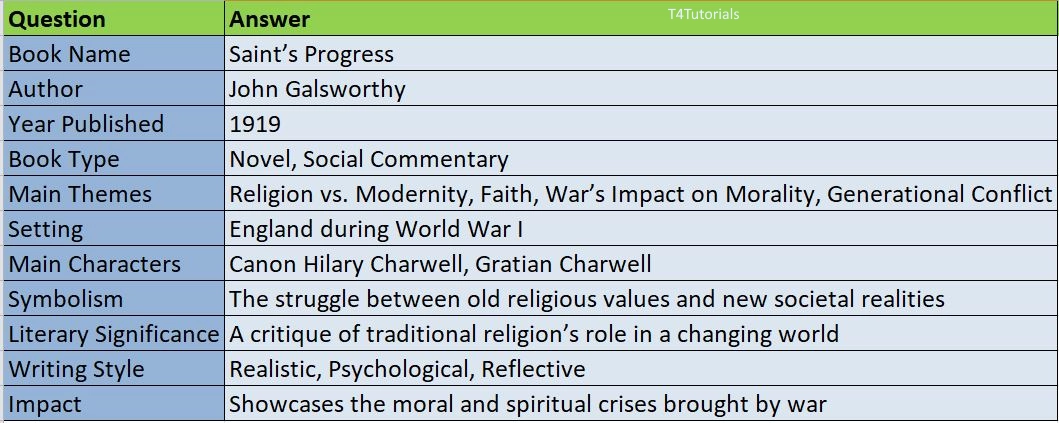Summary:
Saint’s Progress is a novel by John Galsworthy, published in 1919. Set during World War I, the novel explores the moral and spiritual dilemmas faced by the main character, Canon Hilary Charwell, an Anglican clergyman. Charwell struggles to reconcile his strict religious principles with the changing social and ethical realities of wartime England. As the war disrupts traditional values, Charwell’s family and friends begin questioning old beliefs, particularly regarding duty, sacrifice, and morality. His daughter, Gratian, represents a younger generation that challenges conventional religious ideals. Meanwhile, Charwell himself is torn between his rigid faith and the need to adapt to a world in crisis. The novel critiques institutionalized religion’s inability to address real-world suffering and evolving social norms. It presents a deeply psychological and philosophical exploration of faith, duty, and personal progress, symbolizing the broader shift from Victorian values to modern skepticism.
10
Score: 0
Attempted: 0/10
Subscribe
| Question | Answer |
| Book Name | Saint’s Progress |
| Author | John Galsworthy |
| Year Published | 1919 |
| Book Type | Novel, Social Commentary |
| Main Themes | Religion vs. Modernity, Faith, War’s Impact on Morality, Generational Conflict |
| Setting | England during World War I |
| Main Characters | Canon Hilary Charwell, Gratian Charwell |
| Symbolism | The struggle between old religious values and new societal realities |
| Literary Significance | A critique of traditional religion’s role in a changing world |
| Writing Style | Realistic, Psychological, Reflective |
| Impact | Showcases the moral and spiritual crises brought by war |